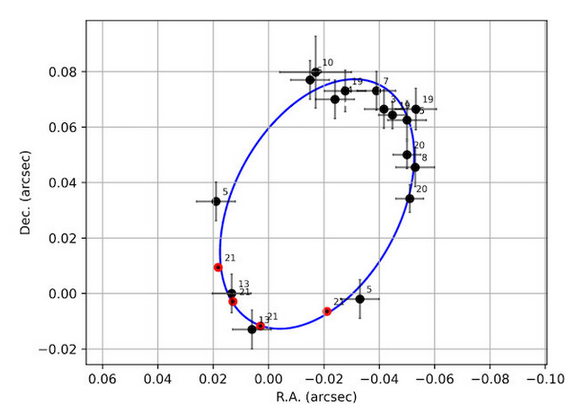Monitoring of Sagittarius A* Yields Discovery of Fastest Orbiting Star

The supermassive black hole at the centre of the Milky Way, Sagittarius A* (Sgr A*), has been a remarkably notable structure this year in astronomy. Back in May of 2022, the first images of Sgr A*’s event horizon had been released, by the Event Horizon telescope array. Now, on July 6th, a paper led by Florian Peißker, documents a star that orbits our galactic centre significantly faster than any bodies we have managed to identify prior.
The Sagittarius A* cluster or simply S – cluster is a grouping of stars in our galaxy that orbit very near the galactic centre. However, observation of this cluster from Earth can be very challenging due to compounding factors. The first is that these stars are simply too close to one another to distinguish them in images consistently, only made worse by the presence of S2, the brightest star in the system, obscuring other members of the S – cluster with shorter orbits than it, as well as polluting the images of stars with larger orbits. The second issue is that our direct view to Sgr A* is obstructed by thick clouds of interstellar gas, blocking the majority of visible wavelengths. This necessitates the use of infrared sensitive observing equipment.
That said, using images compounded from five telescope from the W. M. Keck and ESO’s Paranal Observatory over the past two decades, by using a variety of techniques to process and refine these images, were able to conclusively track and identify S4716. This was done by three sophisticated high-pass filter methods, which lie at the edge of what is currently achievable. These algorithms would allow for the suppression of what they deemed to be background noise, as well as dampen the edges of a source’s point spread function. The exact application of this algorithms is outlined in their paper, in section 2.5.
This star has been found to orbit Sgr A* within 4 years, achieving a maximum orbital velocity of (7956 ± 381) km s−1 at the pericentre, the shortest distance from the focus of its orbit about Sgr A*, which is approximately located at 100 au. The resulting orbit has an eccentricity of 0.754 ± 0.02.

The reason for S4716’s extreme orbital path remains unknown, which is also not directly addressed within Peißker et al. Following publication, Michael Zajaček from the university of Masaryk, granted some insight into his interpretation of the origin of S4716. Since at these distances from Sgr A*, stellar material would be heated to too high a temperature for a core to collapse and initiate the fusion, he believes that S4716 must instead originate from further outward, approaching the stars native to the S – cluster in a manner that caused its orbit to shrink significantly to what has been observed.
--
Cover Image: The Culmination of the ESO Horizon Space Telescope collaboration showing the accretion disk of Sagittarius A*
Journal Source: Florian Peißker et a, Observation of S4716—a Star with a 4 yr Orbit around Sgr A*. The Astrophysical Journal, Vol. 933, 2022
